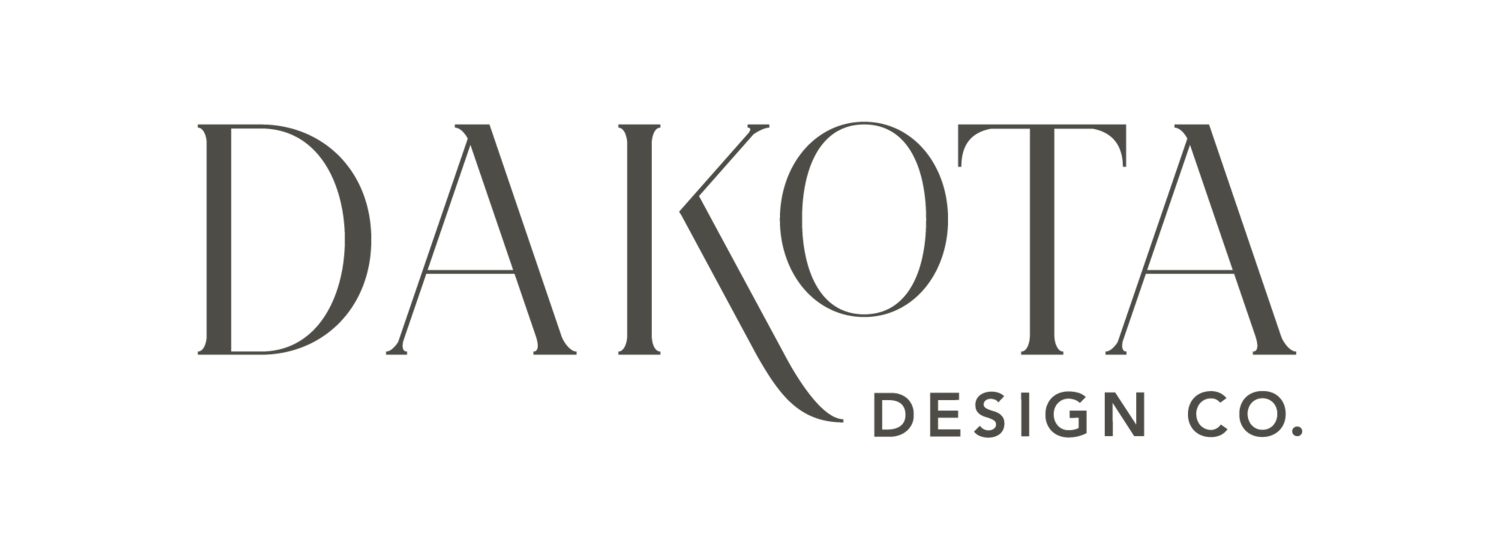Welcome to The DTS Files for Interior Designers
The DTS Files is a premium content hub for interior designers who want to grow their businesses with expert-backed strategies, real-world consulting insights, and proven frameworks.
Want full access? Subscribe now to unlock all premium content.
Already a member? Log in, then scroll down to the blog to read.
|
ACTIONABLE BUSINESS STRATEGIES
I
MEMBERS-ONLY ARTICLES PUBLISHED WEEKLY
|
PRIVATE LIBRARY OF EXPERT INSIGHTS & ADVICE FOR INTERIOR DESIGNERS
| ACTIONABLE BUSINESS STRATEGIES I MEMBERS-ONLY ARTICLES PUBLISHED WEEKLY | PRIVATE LIBRARY OF EXPERT INSIGHTS & ADVICE FOR INTERIOR DESIGNERS

11 Things I’m Saying Goodbye to in 2025
2025 will be a milestone year for me, God willing, because it is the year I will turn the same age my dad was when he lost his very short battle with cancer.
He died when I was 17, and back then, 44 seemed SO old. My dad owned a popular restaurant and catering business and a beautiful home, had five kids, was happily married to my mom, and was a powerful, charismatic presence.
Now, as I approach the same age, I realize just how young he was and how his life was really just beginning.
Losing him at such a young age has given me a unique perspective on how precious my time is and has majorly impacted my priorities. It is also why I spend time every Friday reflecting on how I spend my time every single week.
As I plan for 2025, I reviewed all my notes over the past year and noticed some consistent themes of things I didn’t enjoy or realizations I had that I ignored for MONTHS.
And this is NOT the year for me to hold onto anything that does not serve me.
So, in honor of my dad, one of my all-time favorite humans in the entire world and the person who has had the most significant impact on who I am today, here are the 11 things I’m saying BYEEEEE to in 2025. (in no particular order) …
Our Ten Favorite Blog Posts For Interior Designers in 2024
In 2024, my team and I wrote 49 original blog posts for interior designers (this one makes it 50). That’s a big dip from 2023, when we wrote 90 original posts (based on our own experience!!). What can I say? We love nothing more than sharing insights to help interior designers improve their business operations and client experience.
While we didn’t write as many blog posts this year, we introduced plenty of new ways to help interior designers through our trainings in The Workroom. This year’s highlights included:
Beyond Retail: Increase Revenue + Profits by Selling Wholesale Furnishings
Elevate Your Design Presentation live training
Permits to Punchlists: Essential Construction Training, Management, & Pricing Tips for Interior Designers
And I can’t forget to mention the three cohorts of our signature program, The Designed to Scale® Method. What an honor to help so many designers through my tried & true framework.
If you haven’t had a chance to dive into those resources linked above, I highly recommend checking them out. In the meantime, don’t miss our 10 most popular blog posts of 2024. These are the posts that resonated most with our community of interior designers—each one thoughtfully crafted, 100% human-written, with no shortcuts or AI assistance here.
And, of course, a huge thank you for being here, reading my blog, The Weekly Install®, The Design Brief™, and my Instagram posts.
YOU fuel everything we do.
Alright, let’s count down the top 10 posts of the year.
The Design Brief™ | Volume VII | Effective Interior Design Lighting Strategies for Stunning Interiors
The key to impactful lighting design is truly layering. To appreciate the impact of layering to an impressive lighting scheme, let’s consider the opposite:
A kitchen that is lit by just one center surface-mounted fluorescent fixture
A bathroom lit solely by a three-bulb fixture over the mirror
An elementary classroom that is uniformly lit throughout by strip fluorescents—very effective for its intended purpose, but not at all interesting
A well-designed lighting scheme that adds beauty to a space needs to include a visual hierarchy of light levels: ambient lighting in most areas, but other areas with pools of light for visual interest.
By layering lighting, you are not just lighting the air in a room, you are often lighting walls, a ceiling, art pieces, surfaces, and other elements of interest, and letting that light bounce back into the space. You are deliberately putting higher intensity light levels in some areas, and lessening it in others.
Perhaps it is because nature contains different light levels—across the landscape and over the progression of time—that we are intrinsically drawn to a variation and disparity in light levels within our visual panorama. It speaks to our biological need for stimulation and relief from monotony.
Not only do we derive satisfaction from seeing natural elements and the changing landscape that evolves over the passage of hours, days, and months, but light greatly impacts human health and well-being. Countless studies over the last 50 years have confirmed the link between natural light and healing and recovery.
It is also interesting to consider that there are really only three sources of light: the sun, fire, and electrification. Until 150 years ago—when Thomas Edison developed the first practical type of incandescent lighting in 1879—the sun and fire were the only available sources for millennia. Our ancestors were subject to substantial risk from kerosene lamps, candles, and other sources of fire-produced light to illuminate their homes after the sun went down.
Today, great advancements in solid-state lighting, such as LEDs mean that we can have an abundance of light quality, sources, and effects. Light—natural or electrified—manipulates mood, enhances functionality, encourages activity, and enhances visual interest in our surroundings.
So, let’s look at how to manipulate light—both natural daylight from the sun, and electrified (artificial) light—to create environments that are optimally pleasing to our visual senses.
Join The DTS Files to learn how to layer lighting in your next interior design project.
The Design Brief™ | Volume VI | Dr. Gloria’s Favorite Interior Design Books for Residential Interior Designers
I have always been someone who looks to books when I need to increase my understanding of a topic. Years ago, when I got a puppy, I bought several books on raising a dog. I enhanced my gardening knowledge by reading several books on flower gardening specific to my climate (north and cold!!!!). In today’s age, where an immediate Google search on any topic can provide a wealth of information from various sources, I still feel like there is nothing like reading a good book that dives deep into a single topic of interest.
I’m sure that Amazon loves me for the plethora of books I purchase every year. And when it comes to topic knowledge, it HAS to be the hard copy variety which can be easily referenced, dog-eared, and highlighted.
And what do physical books have over online content? They include everything an author has to convey about a topic in a thorough, comprehensive, and systematic format. And they are always readily at hand on your bookcase.
I LOVE books!! I LOVE design! And I LOVE books about design.
As a tenured college professor (following my 20+ year interior design career, I have taught interior design at three different Midwest universities over the last 14 years), I have read or reviewed countless interior design textbooks to determine the very best, most thorough, and most understandable on a wide variety of design topics.
Often, interior designers ask me and Katie where they might find training classes on interior design principle specific topics they feel deficient in. My response is often to recommend a high-quality textbook on the subject. It’s a cheaper training option that has permanence in that the material remains always at your fingertips.
Without further adieu, here are my top book picks for residential interior designers.
The Design Brief™ | Volume V | Everything interior designers need to know about LED lighting
Interior designers need to understand the attributes of LED lighting to make informed choices about both lamps (commonly referred to as light bulbs) and luminaires (commonly referred to as lighting fixtures). Lighting can elevate and transform an environment, and with the increased complexity of LED technology, and the related energy-efficiency building codes, being a well-informed designer is critical.
Why Are LEDs Becoming Universally Used?
The Design Brief™ | Volume IV | Why the terms MASTER Bedroom and MASTER Bathroom Have Fallen Out of Favor
If you've been paying attention, you may have noticed the term "Master" has quietly faded out of the interior design industry's vocabulary. A few years ago, HGTV stopped using "master bedroom," "master bathroom," and "master suite" in favor of "primary" or "main." Now, real estate sites like Zillow use "owner's suite" or "primary suite" to describe the largest bedroom in a home.
So why the change? To understand it fully, we need to look at a bit of history.
Join The DTS Files for my advice and insights.
The Design Brief™ | Volume III | Construction Milestones that Require Interior Designer Signoff
Interior designers are well aware that completing all design decisions and documentation does not equate to the end of design effort for any given project. During actual construction, implementation, and installation, an interior designer remains actively involved in decisions, troubleshooting, coordination, and client communications. This phase is referred to as Construction Administration in the industry.
Interior design projects range from those that involve construction (for which a building permit is required) to those that involve placement of furnishings only. Between major construction projects—such as a new home build or a major remodel to an existing home—and projects that involve new furniture pieces only, there is a whole range of different scopes. Here, we are talking about interior design projects that involve construction activities, which could include significant construction or just new finishes, cabinetry, or millwork, regardless of whether a building permit is needed.
So, at what milestones during a residential construction project is it critical that an interior designer make a site visit to review completed work and provide approvals?
Join The DTS Files for my advice and insights.
The Design Brief™ | Volume II | Acoustics and Sound Control for Residential Interior Design
The choices of finishes and materials used in a space directly impact the transmission of sound. Sound—vibrations traveling through air that the human ear can perceive—can be manipulated for both optimizing auditory experiences and for mitigating distracting noise. Interior designers need to have a good understanding of sound transmission, the physics of sound, and noise interventions. Even rooms with the most stunning aesthetic can become unpleasant with excessive noise transmission from outside or from adjacent children’s playrooms or laundry room appliances.
There are many considerations for sound transmission inside our homes—whether it’s for distraction-free home offices or bedrooms, reducing disruptions from outdoor noise such as traffic or urban activity, or creating a peak experience for music enjoyment or a home theater.
Join The DTS Files for my advice and insights.

ACCESS A PRIVATE LIBRARY OF EXPERT ADVICE for INTERIOR DESIGNERS
My strategies have shaped the way thousands of interior designers and luxury service providers do business.
Inside The DTS Files, you’re getting the original insights straight from the source—tested, refined, and backed by my experience working with 100+ design firms.
And because this is a members-only space, I can go deeper than ever before—sharing the real strategies that help designers build profitable, sustainable businesses with confidence.

HEAR FROM SOME OF OUR MEMBERS:

Not Ready to Subscribe? Start here.
PRICING PLAYBOOK for INTERIOR DESIGNERS
The Complete Guide to Pricing Your Design Services
Grab my pricing playbook, The Complete Guide to Pricing your Interior Design Services, to learn:
the six most common pricing models for designers
who each one is best for, and
how to know if your pricing model is broken
NEED BUSINESS SUPPORT ASAP?
SHOP TEMPLATES
Plug-and-play templates, questionnaires, processes, and guides for interior designers who want to stop reinventing the wheel with every new project.
The Design Library helps you streamline client communication, set clear expectations, and protect your time—so you can spend less time in your inbox and more time designing. Inside, you’ll find:
✔ Professionally written client emails and marketing guides for every step of the process.
✔ SOPs to standardize service delivery and create a seamless, high-end experience.
✔ Contract templates with sample scopes to protect you, your team, and your clients.
What took me years to refine can be in your inbox in minutes.
*for interior designers only, not interior design business coaches, consultants, mentors, strategists.
SHOP WORKSHOPS & TRAININGS
Learn from my team (comprised of industry experts and educators) and me all the things they don’t teach in design school. And we know because two of the women on my team went to interior design school!
After consulting with and doing hands-on implementation for over 100 interior design business owners, I’ve seen what works (and doesn’t) across every business model imaginable. We are familiar with various software types, team structures of 1 to 20, and the challenges that are coming, whether you’re on your way to your first $100,000 or already making multiple millions.
On-demand trainings for your busy schedule.
*for interior designers only, not interior design business coaches, consultants, mentors, or strategists.
JOIN 16,000 DESIGNERS EVERY FRIDAY
Proven strategies and tools to streamline and elevate your interior design business.

COMPLIMENTARY QUIZ FOR INTERIOR DESIGNERS
Feeling stretched thin in your design business?
You’re busy—but is your business actually working for you? If you’re constantly putting out fires and second-guessing what to focus on next, this 2-minute quiz will show you exactly where to start.



























